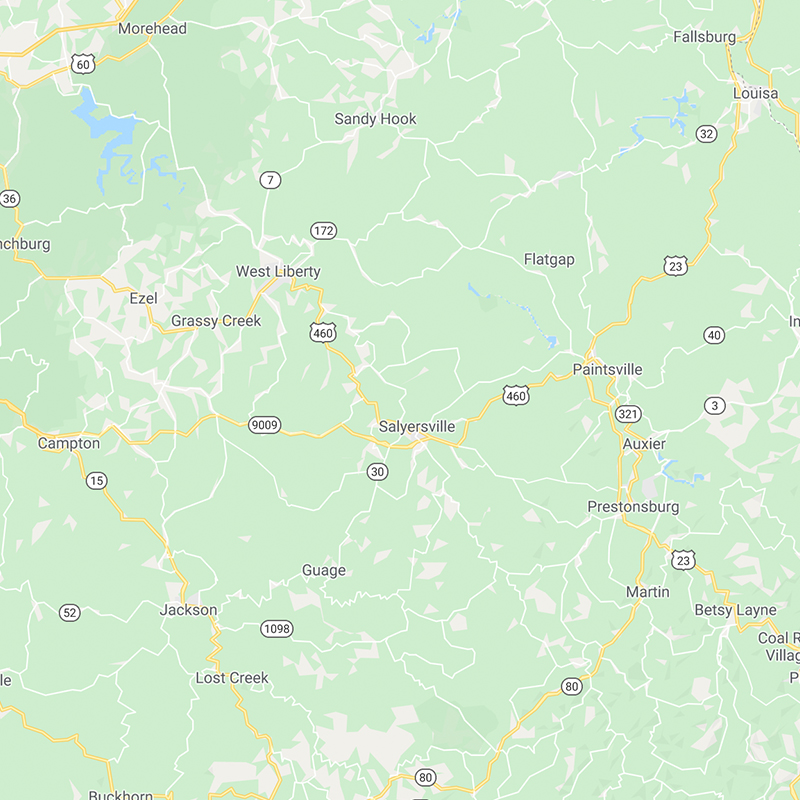One of the questions people ask most about raccoons, especially in those areas where raccoons aren’t endemic, is “What do raccoons look like?” Well, that’s a pretty good question, since there are so many different types of raccoons out there!
Raccoons are known to live 16 years in the captivity, and only 2-3 years in the wild. They may differ in size, fur color, and markings, but they all have certain things in common. So, let’s take a look at some of the different features that you might find in a typical raccoon.

So, What Exactly Do Raccoons Look Like?
Raccoons are medium-sized animals that are usually around two to three feet long. They have bushy ringed tails and furry bodies that are usually grayish-brown in color. One of the most distinctive features of raccoons is their black “mask” of fur around their eyes.
In fact, they’re one of the few animals that can climb down a tree head first! They are known for their sharp claws and “raccoon hands.” These are the long, slender fingers that raccoons use to grab food and climb.

The Masked Bandit
When you think of a raccoon, one of the first things that probably comes to mind is the black mask of fur around their eyes. This mask not only helps to protect the raccoon’s eyes from the sun but also helps them to see better in the dark. The mask is also useful for camouflage when the raccoon is hunting for food.
The raccoon’s masks vary in shape and size, but they all serve the same purpose. Some people even think that the mask makes the raccoon look like a bandit! However you feel, there’s no doubt that the mask is one of the most distinctive features of this animal.
Raccoons and Their Tails
Another distinctive feature of raccoons is their tail. Raccoons have a long, bushy tail that is usually around 12 to 16 inches long. The tail is covered in fur that is the same color as the fur on the rest of the body.
The tail is used for balance when the raccoon is climbing, and it also helps to keep the animal warm in cold weather. In some cases, the tail can also be used as a weapon. If predators threaten them, raccoons thrash their tail around (while screaming and barking) to deter their attacker.
How Big Can Raccoons Get?
Raccoons are usually around two to three feet long, but they can sometimes grow up to four feet long. They typically weigh between 7 and 20 pounds, but some raccoons can weigh up to 50 pounds. The heaviest raccoon of record, name Bandit (of course!), weighed approximately 70 pounds.
In comparison to other animals, raccoons are relatively small. For example, the average adult human is around six feet tall and weighs around 170 pounds. So, an average adult raccoon is about one-tenth the size of an average human.

What Does a Raccoon Look Like at Night?
Raccoons are nocturnal beings with opportunistic nocturnal habits. At night, the raccoon’s eyes become more prominent, making the “mask” more more distinctive. The raccoon’s fur also appears a bit lighter when spotlighted after dark, making it easier make them out.
These changes help them forage for food at night. They have very good night vision, so they can see very well in the dark and their fur keeps them warm at cold nighttime temperatures.
Despite this, it’s still common to see them in broad daylight. They may forage for food for longer hours or are just passing by.
Do All Raccoons Look the Same?
Not all raccoons look the same. The most notable ones are Albino raccoons, which are rare, and have white fur and red eyes. There is also what we classify as the Giant raccoons- the largest of their type, and they can grow up to five feet long and weigh up to 100 pounds.
Other types also include the Tres Marias raccoon; the Barbados Raccoon; and the Guadeloupe raccoon, and there are still a lot out there which may be endemic in a certain place or not. One thing for sure is that each one has its own unique features that help to distinguish it from the others.
Habitat: What Does a Raccoon Den Look Like?
Raccoons are native to North America. They are found in forests, swamps, and urban areas of the United States; forests and urban areas of Canada; forests and jungles of Mexico; and northern areas of South America.
They typically live in hollow trees, rock crevices, or dens that are made out of logs or rocks that look like small caves. Inside their dens, there is a nest where the raccoon sleeps and raises young baby raccoons. They will also live in burrows that are made by other animals and will sometimes live in man-made structures, such as attics and sheds.

What Do Raccoons Eat?
Raccoons are omnivore species, meaning that they eat both plants and animal matter. The plant food goes from a variety of fruits to nuts, which includes acorns, apples, watermelons, peaches, wild grapes, citrus fruits, sweet corn, walnuts, plums, cherries, grains, berries, and vegetables common in the garden.
Also, their animal diet consists of rabbits, chickens, bird eggs, crayfish, fish, frogs, insects, mice or smaller rodents, etc.
They can’t get food from the forest or swamps all the time. So, they invade houses to search for food sources and build their dens inside or near them.
Problems And Dangers Caused By Raccoons
If you’re not aware, raccoons are sneaky little creatures that can cause a lot of damage, and not just to your property but also to your health. They’re known to dig through trash cans, tear up gardens, trip bird feeders, and rummage through pet food bowls – all in search of a meal.
But their scavenging habits aren’t the only problem they pose. Raccoons are also known to carry diseases, the rabies virus, and other parasites which can be passed on to humans and pets if they’re not careful. So, if you see a raccoon on your property, it’s best to stay away and call a wildlife professional to deal with the situation.
Adult raccoons can also become a nuisance due to the sounds and screams they make during their mating season. During this season, you will usually hear the males rather than the females.

Raccoons and Rabies: What Does a Rabid Raccoon Look Like?
Rabies is a serious disease that affects the nervous system of mammals. The virus is typically spread through the saliva of infected animals, which can enter the body through a bite or scratch. Once the virus enters the body, it begins to attack the nervous system, causing different symptoms in different creatures and may even cause brain damage and death in humans.
In raccoons, the virus can cause them to become aggressive and attack other animals or humans. If you see a raccoon that is acting strangely, do not approach it. Call a professional to deal with the situation.
What Does a Raccoon Infestation Look Like?
One of the signs to look for if there is a raccoon infestation is by finding tracks, which look like human handprints, with the exception of their claws. You can also find this out by locating droppings, or their poop. Raccoon droppings are usually two to three inches long, dark in color, tubular in shape, with round and broken ends containing undigested seeds and other food items.
Finally, you may hear noises in the attic. Raccoons are nocturnal, so you will likely hear them at night. If you hear scratching, scurrying, or thumping coming from your attic, it’s likely that you have a raccoon infestation.
Frequently tripped garbage cans, littered trash, and uncapped chimneys can also be a sign of infestation.

What Do Raccoon Tracks Look Like?
As mentioned, the raccoon tracks look like human handprints, with the exception of their paws. They measure two to three inches long and have five toes on each foot.
Their tracks are asymmetrical. The front feet and forepaws are larger than the tracks of their hind legs, and they will look different depending on whether the animal is walking or running. Running tracks look like two parallel lines with the toes pointing in the same direction while walking tracks look like a zigzag pattern.
What Are Raccoons’ Predators?
Like most other animals, raccoons can also become prey. They fear domestic dogs, wolves, coyotes, large owls, hawks, and other wildlife species that are the usual predatory animals. Most predators don’t consume them whole, so a scavenger will take over.
Despite the increasing raccoon populations and their continuous seasonal reproduction, raccoons can only live up to 2-3 years in the wild. Their lifespan is short because life in the great outdoors is often nasty, brutish, and short. But, if these raccoons are held in legal human captivity, they can live up to 20 years.
Raccoon Identification: Final Thoughts
Now that you have read the different features of raccoons and what their infestation looks like, we’re certain you can already identify them! Be sure to avoid catching and killing these raccoons, as they are illegal in some states.
If you’re frightened or unsure whether or not you have a raccoon infestation, it’s best to call us at AAAC wildlife removal. We will properly assess the situation and take care of the raccoon problem.




